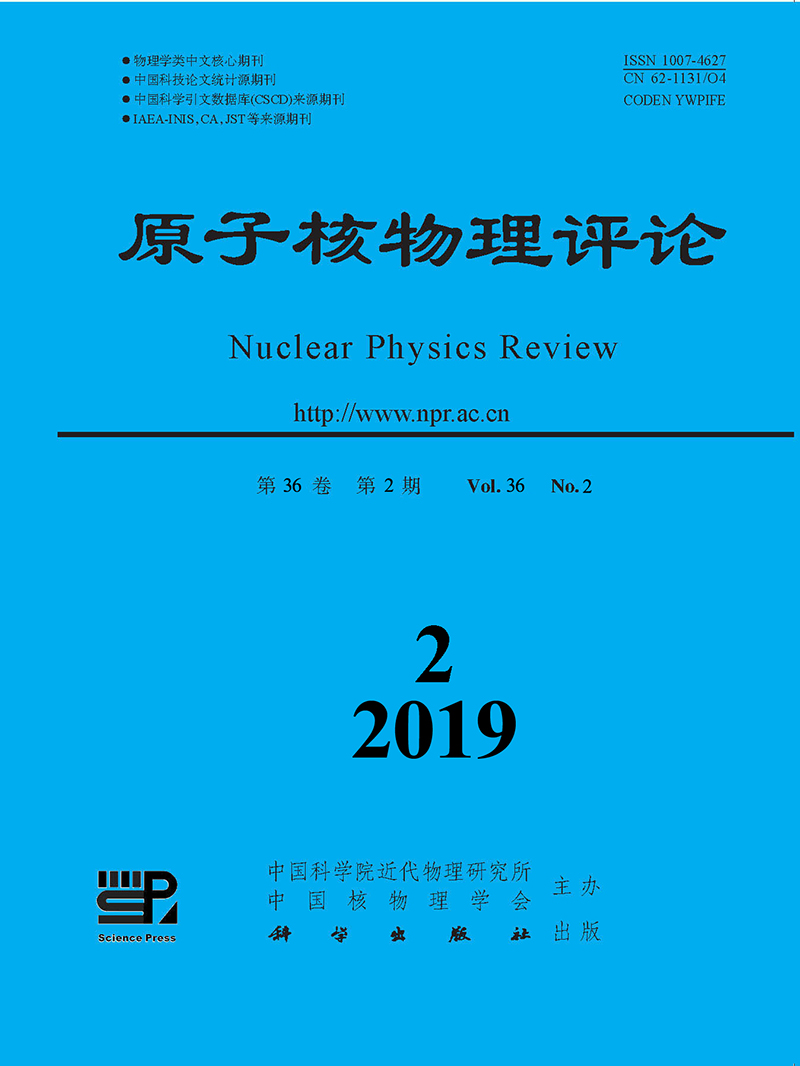|
[1]
|
HEINRICH W, ROESLER S. SCHRAUBE H. Radiat Prot Dosimetry, 1999, 86(4):253. |
|
[2]
|
GUO H X, LUO Y H, YAO Z B, et al. Atomic Energy Science and Technology, 2010, 44(12):1498. (in Chinese) (郭红霞, 罗尹虹, 姚志斌, 等. 原子能科学技术, 2010, 44(12):1498.) |
|
[3]
|
XIA J G, LI W X, QUAN X, et al. High Power Laser and Particle Beams, 2016, 28(8), 132. (in Chinese) (夏加高, 李文新, 权昕, 等. 强激光与粒子束, 2016, 28(8):126.) |
|
[4]
|
CHEN W, GUO X Q, YAO Z B, et al. Moden Applied Physics 2017, 8(1), 0201013. (in Chinese) (陈伟, 郭晓强, 姚志斌, 等. 现代应用物理, 2017, 8(1):020101.) |
|
[5]
|
LUO J, LIU J, SUN Y, et al. Nucl Instr and Meth B, 2017, 406:431. |
|
[6]
|
CHEN W, YANG H, GUO X, et al. Chinese Science Bulletin, 2016, 62(9):978. |
|
[7]
|
SHEN D J, FAN H, GUO G, et al. Atomic Energy Science and Technology, 2017, 51(2):555. (in Chinese) (沈东军, 范辉, 郭刚, 等. 原子能科学技术, 2017, 51(2):555.) |
|
[8]
|
GUO J, DU G, BI J, et al. Nucl Instr and Meth B, 2017, 404:250. |
|
[9]
|
HAN J W, SHANGGUAN S P, MA Y Q, et al. Journal of Deep Space Exploration, 2017, 4(5):577. (in Chinese) (韩建伟, 上官士鹏, 马英起, 等. 深空探测学报, 1997. 4(5):577.) |
|
[10]
|
HUANG J G, HAN J W. Science in China Series G:Physics, Mechanics & Astronomy, 2004, 34:601. (in Chinese) (黄建国, 韩建伟. 中国科学G辑:物理学, 力学, 天文学, 2004, 34(5):601.) |
|
[11]
|
GUO X Q, GUO H X, WANG G Z, et al. High Power Laser and Particle Beams, 2009, 21(10):1547. (in Chinese) (郭晓强, 郭红霞, 王桂珍, 等. 强激光与粒子束, 2009, 21(10):1547.) |
|
[12]
|
PICKEL J C. IEEE Transactions on Nuclear Science, 1996, 43(2):483. |
|
[13]
|
PETERSEN E L, PICKEL J C, ADAMS J H, et al. IEEE Transactions on Nuclear Science, 1992, 39(5):1577. |
|
[14]
|
DODD P E, SCHWANK J R, SHANEYFELT M R, et al. IEEE Transactions on Nuclear Science, 2007, 54(5):2303. |
|
[15]
|
REED R A, WELLER R A, MENDENHALL M H, et al. IEEE Transactions on Nuclear Science, 2007, 54(5):2312. |
|
[16]
|
WARREN K M, WELLER R A, MENDENHALL M H, et al. IEEE Transactions on Nuclear Science, 2005, 52(5):2125. |
|
[17]
|
REED R A, WELLER R A, SCHRIMPF R D, et al. IEEE Transactions on Nuclear Science, 2006, 53(5):3356. |
|
[18]
|
SOGOYAN A V, CHUMAKOV A I, SMOLIN A A, et al. Nucl Instr and Meth B, 2017, 400:31. |
|
[19]
|
SEXTON F W, FU J S, KOHLER R A, et al. IEEE Transactions on Nuclear Science, 1989, 36(5):2311. |
|
[20]
|
AWAZU K, WANG X, FUJIMAKI M, et al. Physical Review B, 2008, 78(4):054102. |
|
[21]
|
DARASZEWICZ S L, DUFFY D M. Nucl Instr and Meth B, 2011, 269(14):1646. |
|
[22]
|
TRUYEN D, J BOCH, SAGNES B, et al. IEEE Transactions on Nuclear Science, 2008, 55(3):2001. |
|
[23]
|
GANG G, T HIRAO, LAIRD J S, et al. IEEE Transactions on Nuclear Science, 2004, 51(4):2834. |
|
[24]
|
CAI L, LIU J C, FAN H, et al. Atomic Energy Science and Technology, 2015, 49:2261. (in Chinese) (蔡莉, 刘建成, 范辉, 等. 原子能科学技术, 2015, 49:2261.) |






 甘公网安备 62010202000723号
甘公网安备 62010202000723号 DownLoad:
DownLoad: